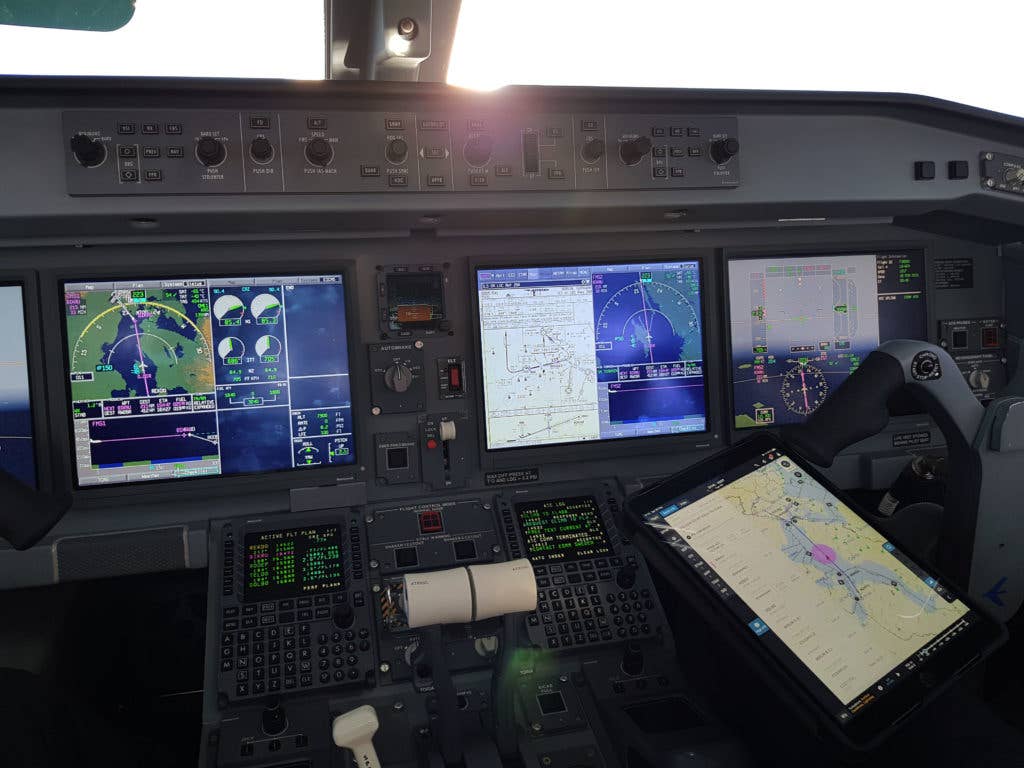Jeppesen NavData Turns 50
The company has been helping pilots find their way for half a century.

The delivery method for Jeppesen NavData products has changed a lot in five decades. [Courtesy: Jeppesen/Boeing]
Jeppesen NavData, the company that has been showing and telling pilots where to go for decades, is celebrating its 50th anniversary of operation.
According to the company, an estimated 90 percent of the aircraft in service at this time rely on JeppNavData from the Digital Aviation Solutions group of Boeing Global Services to get them where they need to be.
"Jeppesen NavData has been at the heart of aviation navigation for decades, evolving not just in step with the industry but often ahead of it," said Brad Surak, the company’s vice president of digital aviation solutions. "It is our proud legacy to have contributed to the digital transformation of flight navigation. This anniversary is a testament to the pioneering spirit that continues to guide our path forward."
The History
The company began in the 1930s when Captain Elrey Jeppesen, an airline pilot, jotted down notes and drew diagrams in a small black notebook. These notes contained information about the airports he visited and highlighted, among other things, the location of prominent landmarks, like railroad tracks and the height of water towers and their location in reference to the airport.
United Airlines, the employer ofJeppesen, was the first to use Jeppesen charts, or "Jepps" as pilots call them.
In 1947 Jeppesen and the Civil Aeronautics Administration (the precursor to the FAA) collaborated to create standard instrument approach procedures and the National Flight Data Center.
The company continued to grow and evolve, serving nations outside the U.S., and in 1973 Jeppesen NavData was used commercially in flight management computer guidance systems.
Jim Terpstra, a pioneer of Jeppesen data services, tells the story.
“The NavData department began with two guys in 1973,” Terpstra said. “Once every 28 days, the computer department created a magnetic tape with the latest information, and I would pack it in a box and we would deliver it to customers.”
According to Terpstra, the first commercial flight using the Jeppesen NavData digital navigation system was a National Airlines DC-10 in 1973.
The 28-day cycle of digital information is still utilized today. According to Jeppesen, the data powering Jeppesen Data Solutions is created and refined from raw source information from more than 246 global providers in 195 countries as well as information from regulatory agencies.
More than 1,000 experts are tasked with transforming the raw data into a consistent format that pilots can use. The company noted that "each cycle, the team turns raw data into refined, consistent flight information by analyzing and verifying more than 47,000 pieces of data."
- READ MORE: Two Kinds of Instrument Approach Charts
Delivery Method Has Changed
Over the decades as digital media has evolved, so has the data delivery method. Magnetic tape gave way to floppy disks, and now pilots receive real-time updates via wireless transmissions that can be easily integrated with advanced flight management systems in a variety of aircraft.
Although ostensibly developed for airlines, Jeppesen NavData is also used by the military and flight schools around the world.
"Every update of NavData reflects our relentless pursuit of excellence in aviation,” said Brett Burgess, the company’s digital aviation solutions leader. “We're shaping not just routes in the sky but the future of global air travel."

Sign-up for newsletters & special offers!
Get the latest FLYING stories & special offers delivered directly to your inbox






